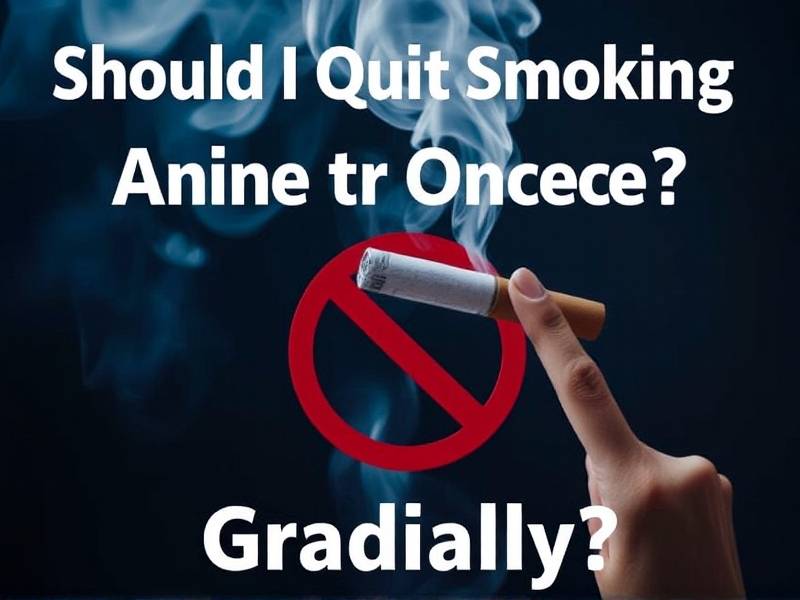Should I Quit Smoking All at Once or Gradually?
Making the Decision: Quit Smoking – Cold Turkey or Gradual Reduction?
Introduction: The decision to quit smoking is a significant step towards a healthier life. However, the approach to quitting can vary greatly. Some opt for the cold turkey method, while others prefer a gradual reduction in smoking habits. This article explores the pros and cons of both methods, providing you with the information needed to make an informed choice.
What is Cold Turkey?

Small Title: The Cold Turkey Approach Cold turkey refers to quitting smoking abruptly without any form of nicotine replacement therapy (NRT) or other aids. Proponents of this method argue that it's a more definitive and empowering way to quit, as it requires no reliance on external tools.
Pros:
- Immediate Results: By quitting cold turkey, you can expect immediate improvements in your health and well-being.
- No Reliance on Aids: This method instills a sense of independence and self-reliance.
- Long-term Success: Some studies suggest that those who quit cold turkey have higher success rates in the long run.
Cons:
- Challenges: Withdrawal symptoms can be severe, leading to cravings and potential relapse.
- Unpredictability: Without any gradual adjustments, the process can be overwhelming for some individuals.
What is Gradual Reduction?

Small Title: The Gradual Reduction Approach Gradual reduction involves slowly decreasing your smoking frequency over time until you eventually quit. This approach allows for a more controlled withdrawal process.
Pros:
- Ease of Transition: Gradually reducing your smoking habit can make withdrawal symptoms more manageable.
- Increased Control: You have control over how quickly you decrease your intake, allowing for better adjustment.
- Higher Success Rate: Some research indicates that this method may lead to higher success rates than quitting cold turkey.
Cons:
- Potential Relapse Risk: If not managed correctly, there's a risk of relapse as you continue to smoke while reducing your intake.
- Time-consuming: It may take longer for individuals to completely quit due to the slower pace of reduction.
Choosing Your Approach
Small Title: What's Best for You? The choice between these two methods largely depends on your personal circumstances and preferences. Consider the following factors:
- Your Commitment Level: If you're highly motivated and ready for immediate change, cold turkey might be suitable. However, if you prefer a more gradual approach that allows for adjustments along the way, gradual reduction might be better.
- Your Support System: Having support from friends, family, or professionals can increase your chances of success regardless of which method you choose.
- Your Health Status: Individuals with severe nicotine dependence may find it more challenging to quit cold turkey compared to those with moderate dependence.
Conclusion: Quitting smoking is a journey that requires careful consideration and personal reflection. Whether you choose the immediate challenge of cold turkey or prefer the controlled pace of gradual reduction, remember that taking that first step is already a victory in itself. Seek support from healthcare professionals or support groups as needed and stay committed to your goal – a smoke-free life awaits!
